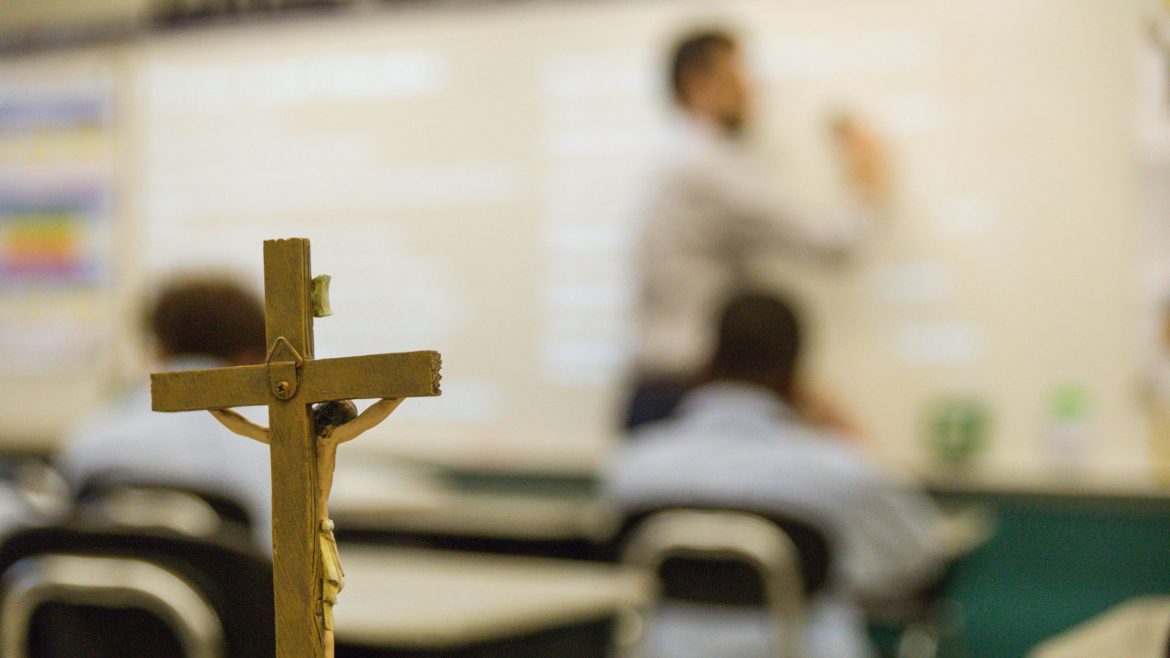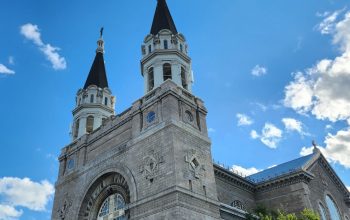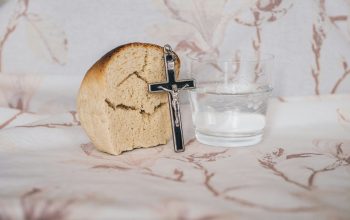Photo Credit: OSV
Why keep up the pretense?
Kevin Urbas, Contributor
As the West continues its cultural transition toward secularism, there remains a stubborn set of institutions that have stood the test of time. In three Canadian provinces — Alberta, Saskatchewan, and Ontario — publicly funded Catholic schools continue to fight for their survival. These schools were constitutionally protected in 1867 as an attempt to safeguard Canada’s French Catholic minority from the English Protestant majority. Times have changed, however, and many argue that the move to abandon public Catholic schools is the next logical step in the march of progress and secularism. Either way, it is increasingly clear that the ideals of the state and the Church are diverging.
As students went back to school last year, a letter from an activist teacher on Twitter, Paolo de Buono, caught some eyes. In the letter, he expressed his concerns to a priest who was expected to visit and say Mass at the local Catholic school. De Buono wrote to this priest that “the image of Jesus at our Prayer Table is transgender or non-binary” and that “when you visit my classroom, you are not permitted to make comments that marriage is only for a male-female couple, that there are only two genders, and that only men can be priests.”
The problem here is that although the school board, the provincial government, and the majority of Canadians might agree with Mr. de Buono, the Catholic Church does not. The Catholic elementary curriculum “Fully Alive” — issued by the Assembly of Catholic Bishops of Ontario — does in fact teach that marriage is between a man and a woman, that we are created male and female, and that chastity is a virtue.
It seems clear that there are two distinct and opposing perspectives here, so what are we supposed to make of them? The response from leaders in Catholic education has effectively been an attempt to square both the secular and Catholic views as one unifying force to bring upon inclusivity, diversity, and tolerance. While it is vital we approach these topics with a sense of charity, we must recognize that the Christian message has so much more to offer. For example, the Catholic faith goes beyond asking us to be tolerant, and instead calls us to recognize the inherent dignity of every human person, who is created in the image and likeness of God. Faith helps us to know the fullest expressions of truth and love and points us to the path of sainthood.
I recall my own time growing up in the public Catholic educational system and looking back, I can clearly see many faults. Religion class teachers are chosen indiscriminately, and they almost always seemed to ignore the actual curriculum, opting for revised versions based on what they felt inclined to teach. It is shocking how inconsistent religion classes could be from grade to grade, with teachers unwilling — or unable, if they lacked the expertise — to teach the faith as it is meant to be taught. There was the occasional school Mass, but it was often practically a mockery of the profound, holy liturgy. With all these memories in mind, I can’t help but ask from a Catholic perspective: why do we even bother?
Catholic education is facing an identity crisis, torn between two worlds. I think many Catholics are holding on to the past: a Church that was well integrated with society at large. However, I do believe that we are doing more harm than good when the Catholicism that is being presented is so mangled and so divorced from the real thing. There is an easy solution to this mess, one in which I believe every side can agree. The idea of a public Catholic school cannot work in our modern society.
This identity crisis is the same one that challenges us here at the University of St. Michael’s College. What are we supposed to make of ourselves as a Catholic college within the University of Toronto? We can either embrace our Catholicism or reject it, but indifference will not do.




